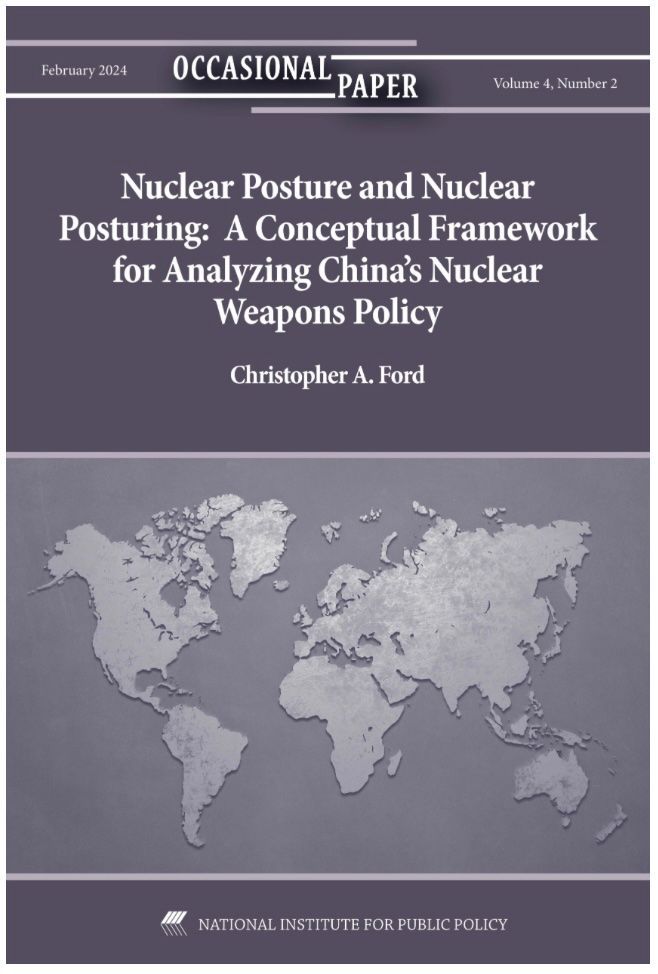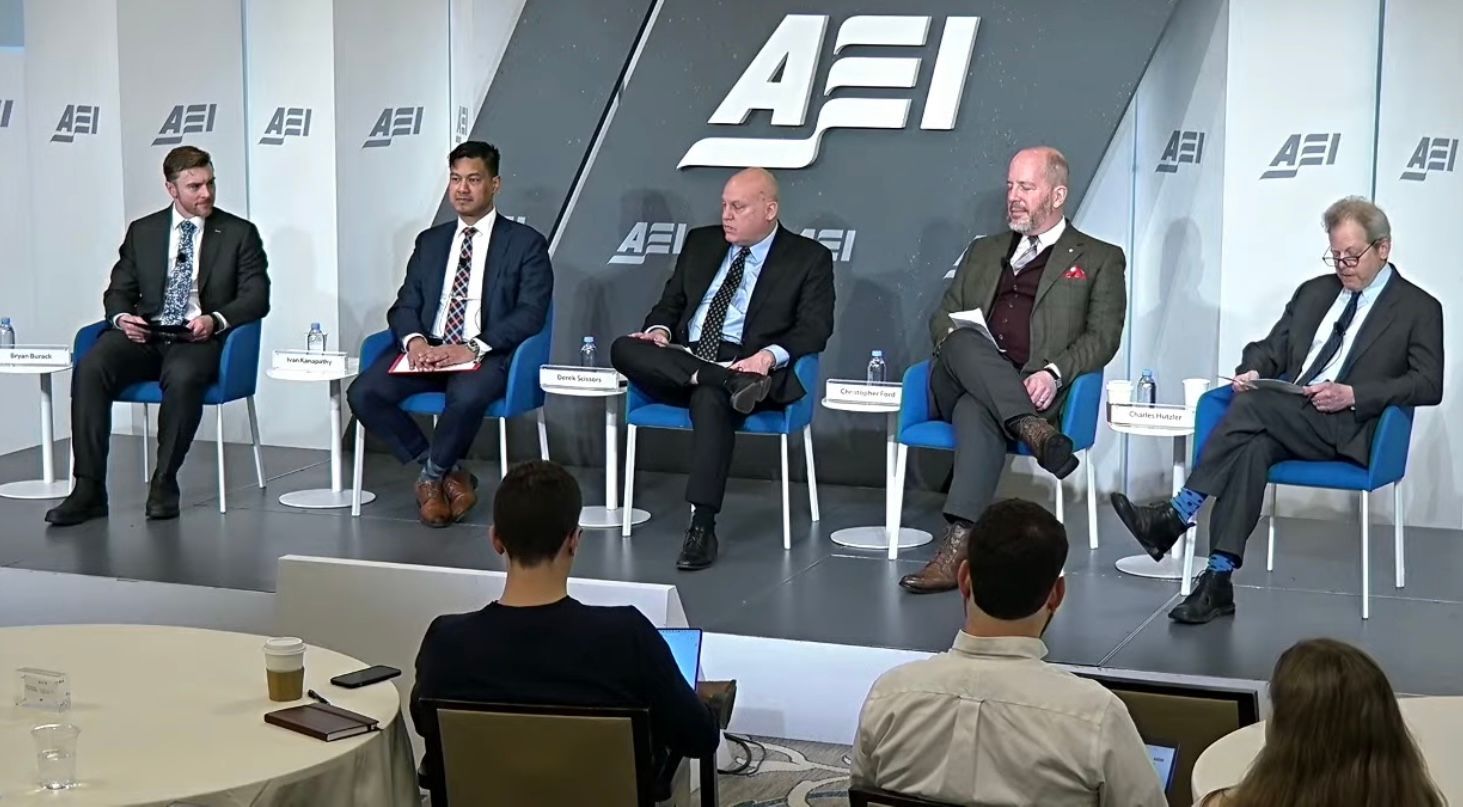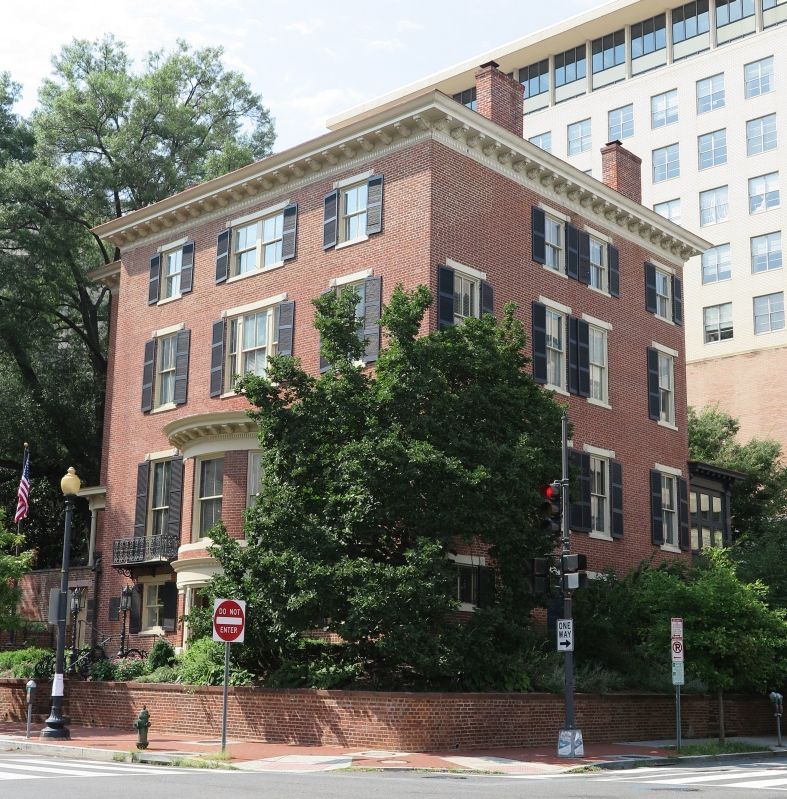The Hon. Christopher A. Ford
New Paradigms Forum -- International Security Policy Since 2009
Nonproliferation in Strategic Asia
Note:
These remarks were given to a roundtable discussion of nuclear proliferation in strategic asia held on June 18, 2010, as part of the Asia Policy Assembly , sponsored by the National Bureau for Asian Research and the Woodrow Wilson International Center for Scholars .
Let me start by offering my thanks to the Asia Policy Assembly for giving us the chance to participate. Since time is short, I’ll confine myself to putting a gloss on my nonproliferation chapter in the last Strategic Asia volume, in light of where things seem to have been moving since it was written in mid-2009.
One point made in my essay was, unfortunately, depressingly simple. Though nuclear weapons clearly lack the enormous salience in Asian security affairs that they had during the Cold War, they seem in a backhanded way to be becoming increasingly important – not less so – compared to even a few years ago, and in ways that seem to bode ill both for nonproliferation and for the broader and more distant goal of disarmament.
Events since I wrote my chapter have done little to dispel this suspicion. Most obviously, the nonproliferation regime continues to demonstrate its inability to accomplish its primary purpose of preventing the spread of nuclear weapons. Iran continues to defy its nonproliferation obligations, even while proceeding apace with developing new enrichment facilities and indeed beginning to enrich uranium to highly enriched uranium (HEU) levels. Indeed, it was reported just this week that Iran says it plans to build four new reactors for medical research – a transparent excuse for producing quantities of HEU well beyond even the amount for which the Obama Administration and its “P5+1” diplomatic counterparts rather foolishly validated Iran’s “need” last October. The writing, one fears, is well and truly on the wall.
Other countries in the Middle East, meanwhile – including Iran’s neighbors, which is hardly surprising – seem to be positioning themselves for just the sort of “cascade” of reactive nuclear development that many experts have long feared. Syria, of course, continues to stonewall IAEA investigators after having been caught working with the North Koreans on a plutonium-production reactor, but the latest wrinkle has seen Saudi Arabia announce a desire to develop uranium enrichment. Meanwhile, Egyptian diplomats have been quite candid about the desirability of having a nuclear weapons option “if the Iranian program proves to be a military program and Israeli nuclear capabilities [are maintained].”
To what extent might such cascade dynamics also develop in East Asia? The thought is deeply disturbing, but unfortunately not entirely outlandish. After all, North Korea seems no closer to “denuclarization” than before, remains a determined proliferator of nuclear and missile technology, and seems as wedded to a policy of regional provocation as ever – most recently, it would appear, in sinking a South Korean naval vessel with considerable loss of life.
But that is not all. Thanks to information and documentation provided by a defector and analyzed in a recent report by former International Atomic Energy Agency (IAEA) inspector Robert Kelley , it now seems increasingly clear that Burma – a State Party to the NPT – is engaged in efforts to develop a nuclear weapons capability, apparently with North Korean help. We started worrying about this a few years ago when I was in government, and Secretary of State Clinton has reportedly been warning her counterparts about the Burmese program in more recent months. Thanks to the defector, and to Bob’s careful analysis, the Burmese nuclear cat now seems to be out of the bag. Thankfully, the secretive and paranoid military junta there doesn’t seem anywhere near fulfilling its nuclear ambitions, but its interest seems unmistakable. Unfortunately, this may tell you pretty much all you need to know about the strength of countries’ expectations these days that any proliferation provocation will swiftly be met by a resolute and effective international response.
Nor is such regional proliferation the only potentially destabilizing force when it comes to Asia’s nuclear future. China’s growing economic might is coupled with expanding military power-projection and area-denial capabilities, and an increased willingness to throw its weight around in regional contexts – sometimes somewhat heavy-handedly, even as, for example, it has raised the importance of controlling the South China Sea to the level of a self-described “core interest” on a par with retaining Tibet and reabsorbing Taiwan. This is surely putting pressure on militarily and economically weaker neighbors that lack other means by which to respond. Nor is China doing much to reassure anyone, since it is presently building up both its nuclear forces and a sophisticated conventional arsenal, even while doggedly resisting proposals for increased nuclear transparency and expressing continued disinterest in any disarmament steps of its own at least until some basic situation of parity with the United States and Russia has been reached.
I do not know whether this Chinese strategic pressure will prompt regional states to counter-mobilize, potentially in nuclear ways, or whether it will simply lead them to “bandwagon” by moving from their current strategic position under America’s wing to a more traditional regional posture under that of the Middle Kingdom. Neither option, however, seems greatly reassuring to me, and neither seems very likely to produce a diminished relevance for nuclear weapons in Asian strategic thinking.
Let me stress that I have seen nothing to suggest any Japanese, South Korean, or Taiwanese questioning of the wisdom of nonproliferation obligations of the sort we have so unsubtly seen of late from Egypt. Nevertheless, it is hard to forget that these East Asian powers are already far ahead of the Arab states of the Middle East in their possession of sophisticated nuclear capabilities. There is no need, in East Asia, to make some quasi-deterrent political hay out of one’s sudden interest in fissile material production and other sophisticated capabilities, for this interest – and indeed, to some extent, such capabilities – have long been present.
Japan already has a very significant fissile material production and space launch capability that could support a rapid nuclear weapons option. South Korea is busily seeking a sub-species of plutonium reprocessing, and is improving its own space launch systems. A quick Google search even reveals that plutonium reprocessing is said to be “under consideration” in Taiwan. I have seen no significant talk of a nuclear weapons “option” in any of these countries, but perhaps there doesn’t need to be.
To be sure, the United States remains committed to its longstanding policy of nuclear weapons reductions, but this does not necessarily help reduce the reliance other nations place upon nuclear weaponry. In fact, some worry that it may actually increase the pressures facing U.S. allies in East Asia, perhaps making nuclear weapons – or at least the development of the strategic hedge of a capabilities-based nuclear “option” – more attractive.
The impending fiscal crunch suggested by Washington’s towering federal deficits and staggering federal debt is already seems to be having a strong chilling effect upon U.S. defense spending in ways that will constrain our ability to provide non -nuclear alliance reassurance to East Asian allies as we reduce our nuclear arsenals and the reach and depth of our nuclear “extended deterrence.” On top of plans for ongoing draw-downs in strategic forces, moreover, the Obama Administration also pledged itself in its 2010 Nuclear Posture Review, to eliminating the nuclear-armed, sea-launched version of the Tomahawk cruise missile (TLAM-N) – a quietly forward-deployable weapon that American planners long believed important to our military-cum-psychological “nuclear umbrella” for the region.
The United States has promised to “[s]trengthen regional security architectures and reinforce security commitments to allies and partners,” but it has escaped no one’s notice that defense spending is quite flat these days, even as the Pentagon – under the firm guidance of Secretary Gates – seems preoccupied by the challenges of Afghanistan-type counter-insurgency. No one gainsays the importance of fighting our current wars, but some have worried whether America will end up letting atrophy our ability to fight conflicts with fairly sophisticated potential adversary states. Militaries are famous for their propensity to prepare for the last war, and indeed we discovered our skills at high-technology, fast-paced, military-defeating maneuver warfare to be poorly suited for the challenges of territorial occupation and counter-insurgency in Iraq. One hopes we do not end up getting good at those things just in time to discover that we badly need something more like our old skillset after all.
To be sure, there is likely much hype in the prophecies of American “decline” and global politico-military retrenchment that are currently fashionable, and perhaps no small amount of exaggeration and political wishful thinking. Nevertheless, the current declinist zeitgeist highlights the special challenges that confront American security planning in a context in which trans-Pacific alliance reassurance is perhaps more essential than at any other time since the end of the Cold War. The future of the region may depend upon it, both in nuclear and in broader strategic terms.
This is why I think the American presence and role in East Asian security affairs is the most important variable for the region’s nuclear and broader strategic future; the nature and degree of our continued involvement will powerfully affect what path or paths other players feel it advisable or necessary to take.
And this brings me to the second main point I made in my 2009 chapter: the importance of understanding arms control issues through a prism that roots them in a deep and complicated interweaving of political and broader security issues. Nuclear weapons control is not fundamentally about nuclear weapons: it is about juggling equities within a bewildering web of security relationships, about managing tensions within the complex global system through which geopolitical order is (or is not) maintained, and about living out the multi-dimensional relationships that key participants have with that system of order. These challenges are really neither technical nor legal; they are political, psychological, and strategic – and they demand to be approached as such.
At present, I worry that the trend lines in Asian nuclear security do not point in reassuring directions. I hope that it will yet prove possible for regional players – and above all, Washington, which still retains a uniquely important role as the region’s foremost non-resident stakeholder – to engage in such a way that these tensions can be managed and these challenges surmounted. But I am not certain that we are presently prepared for the task.
-- Christopher Ford



Copyright Dr. Christopher Ford All Rights Reserved






